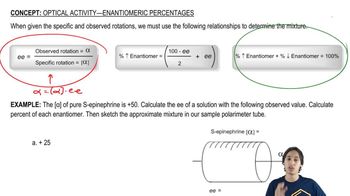In this attempt to convert the line angle drawing of d-erythrose (shown) to the Fischer projection (shown), by viewing it from a certain direction (shown), a mistake was made. What was the mistake?
<IMAGE>
 Verified step by step guidance
Verified step by step guidance Verified video answer for a similar problem:
Verified video answer for a similar problem:

 1:15m
1:15mMaster Introduction to different projections. with a bite sized video explanation from Johnny
Start learning